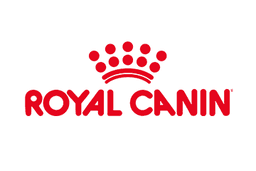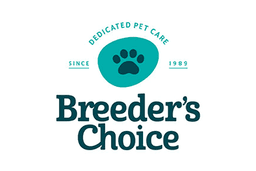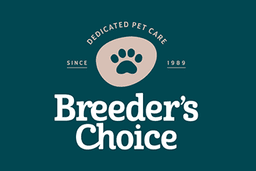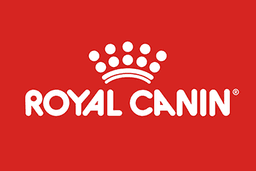Spare a thought for dog mums, who often have to deal with anything up to ten or more pups at once! At least the average dog pregnancy is much shorter than a human one.
This guide will take you through how to treat a pregnant dog and how to take care of dogs after giving birth. Please bear in mind that it is a guide only, and your vet is the best source of information should you have any concerns at all about the wellbeing of your pregnant dog.
How do I know if my dog is pregnant?
Chances are that you’ve planned to breed from your dog, so you’ll be on the lookout for indications that the mating was successful. However, on the off chance that breeding wasn’t on your list of things to do and you’re noticing odd changes to your dog’s behaviour, as well as some physical changes, you may be dealing with an unexpected pregnancy.
Early signs of pregnancy in dogs can include the following:
- Her teats may be a bit swollen and more prominent, which can start to happen at around 25 to 30 days of gestation.
- You may notice a vaginal discharge she didn’t have previously, which can happen around a month after mating.
- She may be more affectionate, or more irritable, or even seem a bit depressed, due to hormonal changes.
- Some dogs exhibit a loss of appetite, and vomit occasionally, also due to hormonal changes.
- She may tire more easily.
- There could be some nesting activity.
- Towards the 45 to 50-day mark, you will notice her belly swelling and obvious weight gain.
How long are dogs pregnant?
The average dog pregnancy is 62 to 64 days; approximately two calendar months. The length of a pregnancy can vary though, depending on the breed of your dog, and the size of the litter she’s carrying.
If the pregnancy is planned, you’ll no doubt have vet checks lined up. However, if it’s a surprise, it’s wise to get your dog to the vet as soon as possible to confirm the pregnancy. It’s important to have the oversight of a vet throughout a dog’s pregnancy to ensure any potential complications can be managed, and neither the dog or her puppies are at risk.
From 21 to 25 days, the vet can do a blood test to check for the hormone relaxin, which is only present when a dog is pregnant. This is also the period when the vet can palpate the dog’s abdomen to feel if the uterus has thickened, and whether there are any bumps which would indicate pups. This is not a conclusive test. If a dog is overweight or only carrying a single pup, palpating the abdomen may not offer any clear indications.
After 25 days, a stethoscope examination or an ECG can usually detect puppy heartbeats. While either test can confirm that there are pups, it can’t be used to work out the size of the litter.
The most common test used to confirm a pregnancy is an ultrasound scan. It’s safe and non-invasive, and can detect pups from around the 28-day point of a pregnancy.
The most definitive medical confirmation is x-ray, and can be done from 49 days when the pups will have developed complete skeletons. They will show up clearly on an x-ray image, and you and the vet be able to see how many pups there are.
As all these tests can happen at different stages during the pregnancy, you’ll have ample opportunity for your dog to be monitored throughout. You'll also be able to make a plan for delivery and organise to be able to contact the vet at whelping time (delivery) should anything go wrong. Although it's not common, some dogs may require a planned caesarean section, so a date should be set up for that.
Phantom or pseudopregnancy in dogs
This is a condition that mimics pregnancy in unspayed dogs. After an oestrus cycle, when the dog is fertile, her ovaries secrete hormones in order to prepare her uterus to receive embryos and maintain a pregnancy. However, if the dog hasn’t conceived, this process is redundant.
Early on, those hormonal changes will create symptoms that look as if the dog is pregnant. In mild cases, the hormone levels will subside and your dog will go back to normal on her own over two to three weeks. In some more severe cases, there may be a need for vet intervention, and will usually involve use of tranquilising medications to settle any anxiety, and diuretics to ease milk production and reduce any fluid retention.
If you do not plan to breed from your dog, spaying is recommended as phantom pregnancies can be unnecessarily stressful for her. If your dog has had one phantom pregnancy it increases the likelihood that she could have more, which puts her at risk of breast cancers and potentially fatal uterine infections.
Nutrition for pregnant dogs
Your pregnant dog needs to be on a quality, well-balanced diet. Initially, she won’t require additional food. Unless otherwise advised by your vet, just maintain her normal diet. As the puppies grow and weight gain increases in the third trimester, slowly increase her food by around 30-50%. It’s best to offer small frequent meals, as they’re less likely to cause digestive issues and discomfort, given that her uterus will be squashing and displacing other organs.
In addition to maintaining a good diet, it’s important that your dog still has regular exercise. Maintain your usual level of walks and activities until you reach the final trimester, when she will benefit more from shorter, gentler walks. This will help her maintain fitness and strength ahead of whelping, and won’t waste any of the extra nutrition you’re giving her.
Preparing for whelping
Your dog will require a safe, quiet and comfortable place to deliver her puppies. It needs to be warm and out of the way, but still easy to monitor during whelping and in the early days after the puppies are born. Specialist whelping boxes can be purchased or made. A large cardboard box or a child’s wading pool can be used as well. Whatever you use, it needs to allow the dog to easily get in and out, but have tall enough sides to prevent the pups escaping!
It’s good to prepare your chosen place ahead of time so your dog can accustom herself to using it as a cosy spot. That will help encourage her to head there when she goes into labour, rather than seeking out the bottom of your linen cupboard or wardrobe!
You'll need to line the whelping box well with old towels and sheets, and if your dog is due to deliver in winter, perhaps an old blanket or quilt. Use things you don’t need any more, as they’ll probably need to be disposed of once the pups have been born.
Signs of labour in dogs
You’ll begin to notice increased nesting activity in the days leading up to labour commencing – hopefully in the whelping box! If she’s nesting in other places, encourage her to move to the box. If it’s been a planned pregnancy, your vet will have been able to calculate a delivery date based on when she was mated and conceived. However, if it’s an unplanned litter, you’ll need to keep a close eye on your dog as a possible due date is approaching.
Things to look out for to determine the onset of labour include:
- Her temperature will drop from a normal 38.4C to 37.8 in the 24 hours prior to delivery starting.
- She’ll be increasingly restless.
- She may be urinating more frequently as she begins contractions, which place pressure on her bladder.
- She may start digging in her nest.
- There will be a dark green vaginal discharge, which indicates that the placentas are detaching and the pups are ready to be delivered.
Most dogs, if they’ve been in good health throughout the pregnancy and there has been no indication of possible problems, manage to deliver their pups with little intervention. So if everything is lining up well, all you will have to do is just be there to monitor and help if necessary.
If labour hasn’t started within 24 hours of her temperature dropping, or a few hours after that green discharge, call your vet, as there may be an issue that needs attention.
Labour times can vary, because they’re partially dictated by the size of the litter. Each pup will usually take around an hour, so if you have six pups due, you’re looking at around six hours overall. Most dogs deliver their pups steadily, although with some, there may be longer breaks between them. If it’s been longer than two hours between the last pup and then next one you’re expecting, call the vet.
In a normal delivery, the mother will remove the amniotic membrane herself, bite off the umbilical cord, and begin to wash the pup, which will stimulate its breathing. A new mother, or an anxious one, may not quite have her act together. You can help by gently removing the membrane yourself. If she doesn’t bite off the cord, tie it off about three centimetres away from the belly, with a second tie a bit further down, and then with clean scissors make the cut.
You can gently pinch the back of the pup’s neck to stimulate breathing, and use a small eye dropper pipette to suction any fluid from its nostrils. Keep track of the placentas. There will be one for each pup. Any that remain in the dog’s uterus, either whole or partial, create a risk of infection, so if you notice one missing, or one that seems incomplete, you’ll need to call the vet.
Offer your dog water during the litter. If it’s a large litter, she may need to urinate at some point, so take her outside, but stay with her. You don’t want her delivering another pup outside and it being missed. Cover the already delivered pups with a light blanket to keep them warm.
Once the pups have all been delivered, put them all along her belly and monitor over the next few hours to ensure they’re all latching on and feeding. Contact your vet if there are any that aren’t doing this or seem to be having difficulties. A new mother might also be a bit overwhelmed and confused as well as exhausted by this time, so might benefit from a vet visit if she doesn’t appear to be coping, and the pups aren’t able to feed.
Once the delivery has finished, encourage your dog to go outside, relieve herself, stretch and settle. In the meantime, get rid of all the soiled bedding from her box and replace it with soft clean and warm towels and blankets. Once you’re sure the pups are all feeding well, leave them be so the mother can rest.
Can you worm a pregnant dog?
Some vets recommend you worm your dog at around day 40 of her pregnancy, and again through to when the pups are two weeks old. This can offer protection for the pups. This is a conversation to have with your vet when discussing pregnancy and post-delivery care.
Finally, congratulations on your new arrivals. Enjoy the chaos as they grow, and you care for them and socialise them so they are good to go to new homes!





























